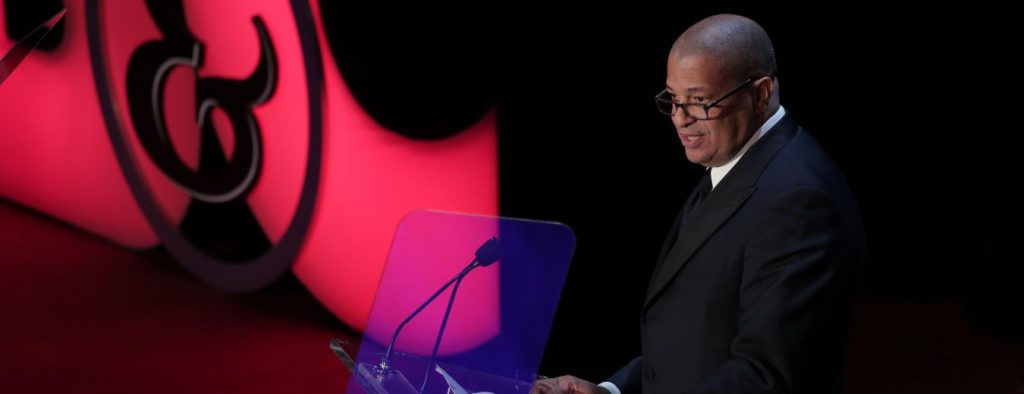Alfred C. Liggins III, the CEO of Urban One (previously Radio One), is a shining example of what you can accomplish with an MBA from The Wharton School. Not only is he considered a trailblazer of urban radio, but he has also paved the way for Black ownership in media.
It was just two years after earning his Wharton MBA in 1995, that Liggins was promoted to CEO of Radio One. He took over from his mother Cathy Hughes, who founded the company in 1980 with limited funds—selling her home and car to finance the venture. Hughes built the company station by station, but it truly didn’t begin to take off until Liggins got involved, long before his MBA and becoming CEO.
The History of Radio One
Liggins’ involvement started in 1985, joining Radio One as an account manager. While his mother focused on programming and her talk show, Liggins took over sales and promotion. He quickly recognized that his mother had built a reputation as the voice of Washington’s African-American community, and he used that to bring in quality advertisers until the station began to flourish. At the same time, Liggins attempted to take night classes at the University of the District of Columbia, but he quickly dropped out to focus on the company.
Then, in 1987, Hughes purchased a second station: WMMJ-FM in Washington. It cost $7.5 million and
Liggins
changed the company’s light rock programming in favor of rhythm-and-blues, which better appealed to their African-American listeners. It was an intelligent strategy and, eventually, became Radio One’s key to success. The company continued to buy up inexpensive, underperforming metro stations before converting them into an African-America-friendly format. By the age of 23, Liggins was earning more than $100,000 as he turned station after station profitable.
Just two years later, in 1989, Liggins was promoted to President, Director, and Treasurer of Radio One while his mother remained CEO. The company continued to flourish, taking advantage of the Federal Communications Commissions lax rules concerning media ownership to buy up, even more, stations in Baltimore and Washington.
It was during this time that Liggins decided he needed to improve his education. Hughes stipulated that she would not turn the company over to Liggins unless he earned a degree. So, despite the fact that Liggins had never completed an undergraduate degree, he applied to the Wharton School at the University of Pennsylvania and was accepted into the MBA program. He graduated in 1995, and two years later, his mother kept her promise and promoted Liggins to CEO in 1997.
Liggins as CEO of Radio One
After Liggins had become CEO, he began an aggressive expansion plan for the company, which included the purchase of 18 new stations over just 20 months. Then, in 1999, he took the company to the public, selling 7.15 million shares. This move helped him to raise additional capital and made Hughes the first African American woman with a NASDAQ-listed company. At the same time, Liggins closed a $1.3 billion deal with Clear Channel, adding 12 stations to Radio One’s list and bringing the company into Houston, Dallas, Miami, and Los Angeles. This growth was so impressive that in 2000, Radio One became a case study at the Harvard Graduate School of Business.
In 2001, Radio One became the largest urban market radio company in the U.S. after buying out Blue Chip Broadcasting and gaining an additional 15 stations. By 2003, 66 radio stations, 22 metro markets, and 18 million listeners made up Radio One. A year later, Liggins expanded to cable television—in partnership with Comcast—with TV One, a network aimed at African-American audiences. By the end of the year, TV One was available in over 20 million homes.
Since taking over as CEO, Liggins has turned the organization into a multimedia empire with over 70 stations, billions in assets and millions of listeners. Urban One is the owner of TV One, Radio One, Reach Media, iOne Digital, and One Solution.
“We are the largest distributor of urban content in the country,” explains the website. “For more than 35 years, Urban One has been the leading voice speaking to Black America. First, as the largest local urban radio network, then, as the largest syndicator of urban programming. Yes, we can even claim our position as the largest African-American owned television network and distributor of digital urban content.”
Accomplishments and Recognition
In 2015, Liggins was inducted into the Broadcasting and Cable Hall of Fame. He was recognized for his work heading the largest African-American-owned radio station in the United States.
“It has been 35 years and Radio One, Inc. still stands as the only African-American owned and targeted multi-media platform in the United States reaching over 82 percent of Black households with our diversified portfolio of media assets,” Liggins told News One in an interview.
Finally, on May 5, 2017, eighteen years after going public, Radio One changed its name to Urban One, Inc. to better reflect the multimedia powerhouse that it has become. It’s a multi-media conglomerate comprised of a television network, local and syndicated radio group, a digital company, and a branded content agency. Recently, they’ve even expanded their portfolio into gaming and financial services.
